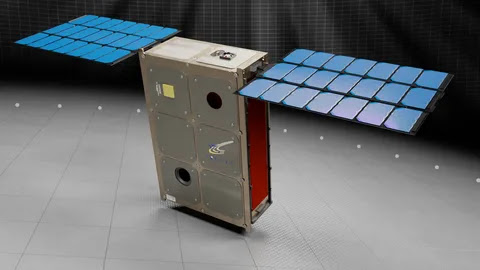As A General Rule, a Small Satellite Is One That Is Under In Mass and Size Information and Communication Technology
A
Small
Satellite, also known as a miniature satellite or smallsat, is a
spacecraft with a low mass and dimensions, often less than 1,200 kg (2,600 lb).
While all such satellites are classified as "small," several
classifications are employed based on mass. Satellites can be created in modest
sizes to lower the high economic cost of launch vehicles and construction
costs. Miniature satellites, especially in huge numbers, may be more valuable
than fewer, larger ones for several purposes, such as scientific data
collection and radio transmission.
Small satellites may have technical issues such as a lack of
sufficient power storage or space for a propulsion system. One reason for
miniaturising satellites is to save costs; bigger satellites necessitate larger
rockets with greater thrust, which are also more expensive to fund. Smaller and
lighter satellites, on the other hand, necessitate smaller and less expensive
launch vehicles and can occasionally be launched in multiples. They can also be
deployed 'piggyback,' taking advantage of extra capacity on larger launch
vehicles. Miniaturized satellites enable lower-cost designs and easier mass
manufacture.
Small satellites are those with a low mass and size, often
less than 500 kg. All of these satellites are classified as ‘small.' Different
classifications, however, are used to categories these satellites based on
mass. Small satellites lower the enormous economic cost of the launch vehicle
as well as the costs involved with its construction. This has resulted in an
increase in the engagement of emerging economies and startups in satellite
launch for a variety of purposes including communication and security. The development of advanced tiny satellites,
such as Hawkeye 360 Ink’s small sat express, GTOSat-Cubesat mission, and small
satellite, has contributed significantly to the rise. Of operations including
earth observation and communication
The
first satellites were modest, but as time passed, satellites were designed to
service multiple missions, and they grew larger and more expensive, taking a
long time to design, produce, and launch. Envisat was one of the most extreme
examples. Compromises between multiple aims and instrumentation were frequently
required for these huge spacecraft. Many other projects would have died if the
entire system failed.
More
small satellites, each dedicated to a specific mission purpose and carrying a
single instrument, are likely in the future. Through this technique, an
increasing number of countries throughout the world are becoming involved in
Earth observation from space, not only by utilising data from big established
systems, but also by building their own systems. In the beginning, there were
some small, lowcost satellites, but they were neglected or considered toys by
the space community. The first microsatellites were created by amateur radio
enthusiasts and launched in the early 1960s. The invention/introduction of the
microprocessor in the 1970s represented a quantum leap in a spacecraft's
onboard capabilities. This technological advancement was a major motivator.



Comments
Post a Comment